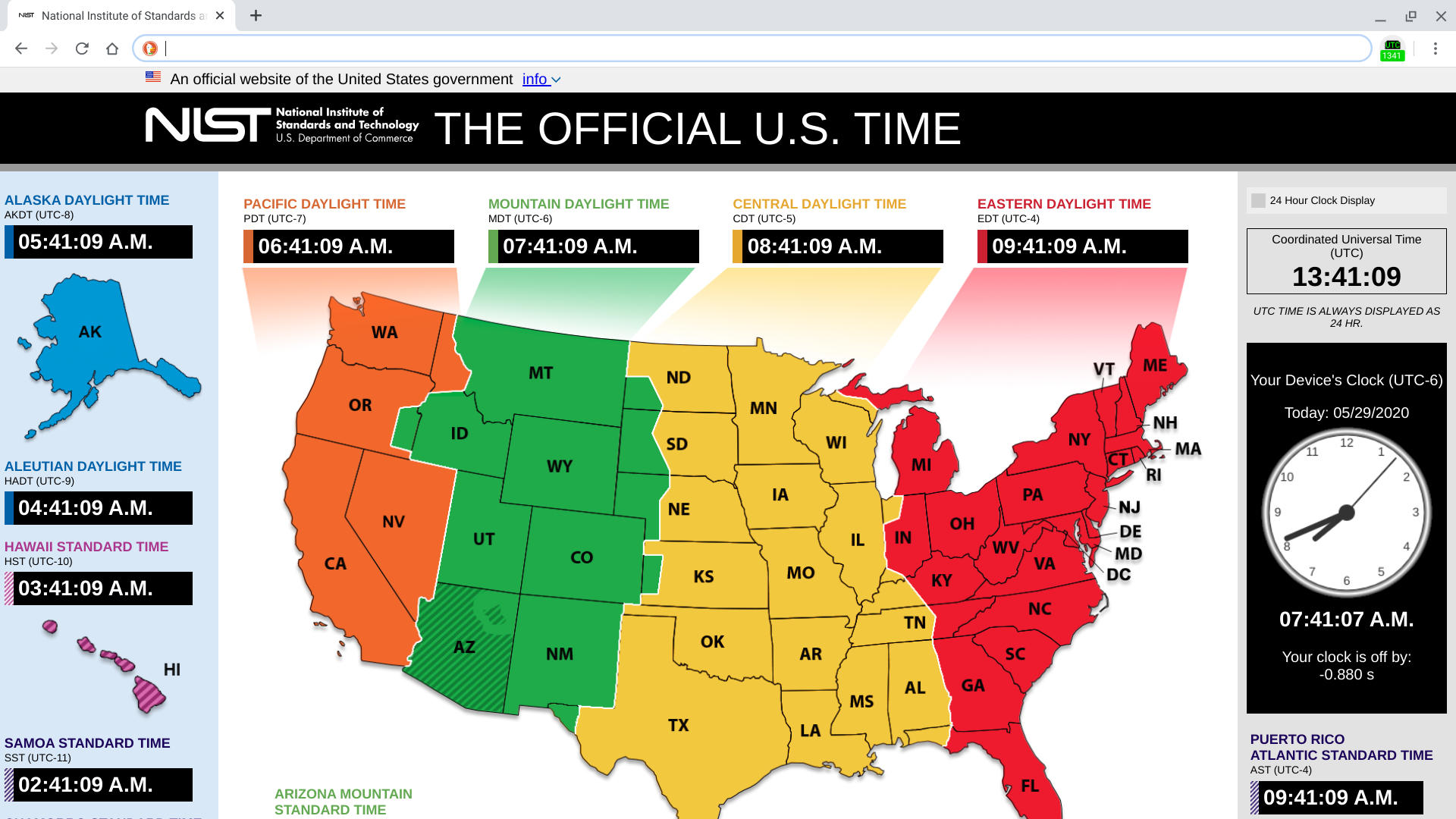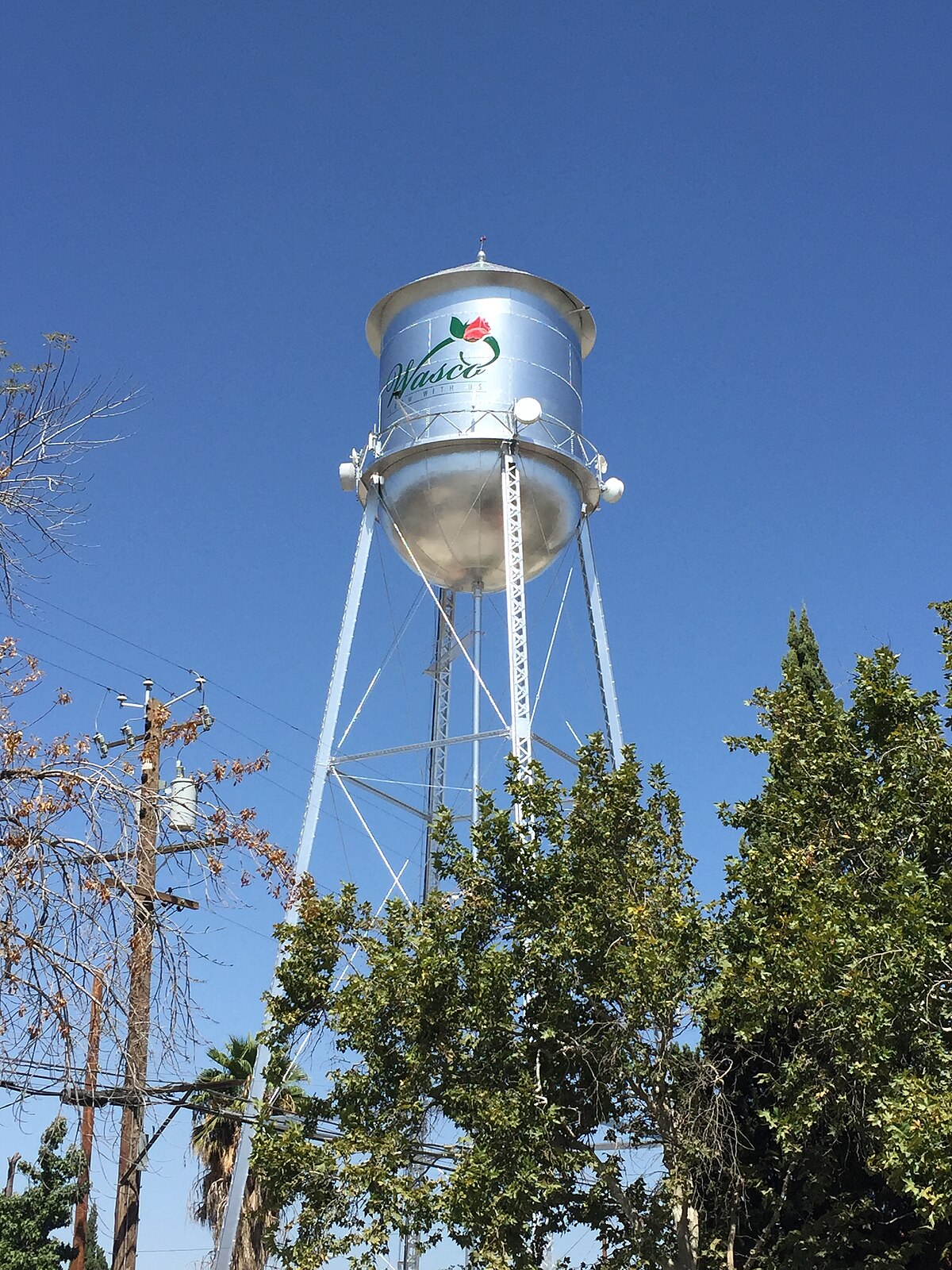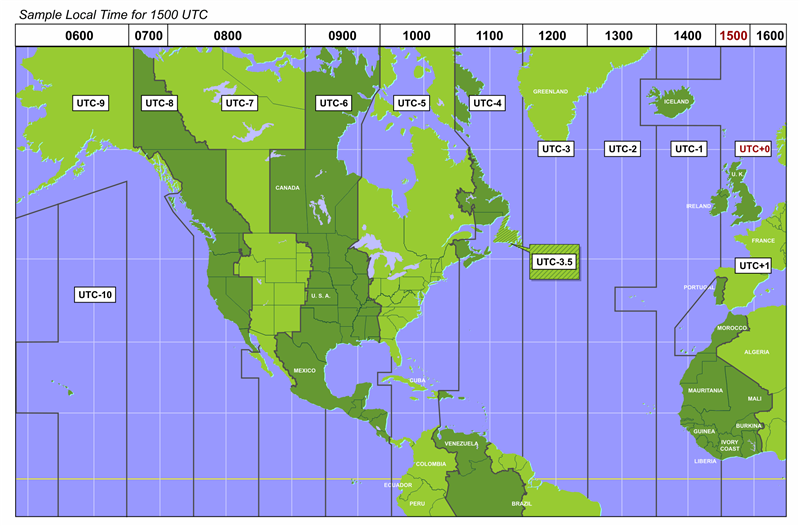Brian lives in Australia and needs to convert a UTC time into his local time. Problem is, he doesn't know how to go about doing it.

UTC is an abbreviation for Coordinated Universal Time. (Yes, I know it looks like the abbreviation letters are out of order. They are; this is why it isn't an acronym. The abbreviation is—believe it or not—based on a political compromise.) UTC is equivalent to International Atomic Time with leap seconds added at irregular intervals to compensate for the Earth's slowing rotation. UTC is never out of synch with GMT (Greenwich Meridian Time) by more than nine tenths of a second, so the two (UTC and GMT) are virtually equivalent in common usage.
Because of this, all you need to do to convert from UTC to a local time is to figure out how many hours your time varies from GMT. There are any number of Websites you can visit to determine such information; the following is an example of one you can use. (Just click a city near you that you know is on the same time zone as you, then look at the resulting time to see how many hours different you are from GMT.)

Universal Time Coordinated. Offset: UTC is 0 hours ahead Greenwich Mean Time (GMT) and is used in Universal Coordinated Universal Time (UTC) is the world time standard that regulates clocks and time. It is successor to Greenwich Mean Time (GMT). For casual use, UTC is the same as GMT, but is used by the scientific community. Apr 18, 2021 Time Changes in UTC Over the Years Daylight Saving Time (DST) changes do not necessarily occur on the same date every year. Time zone changes for: Recent/upcoming years 2020 — 2029 2010 — 2019 2000 — 2009 1990 — 1999 1980 — 1989 1970 — 1979 1960 — 1969 1950 — 1959 1925 — 1949 1900 — 1924 1850 — 1899 1800 — 1849. The time zone using UTC is sometimes denoted UTC±00:00 or by the letter Z—a reference to the equivalent nautical time zone (GMT), which has been denoted by a Z since about 1950. Time zones were identified by successive letters of the alphabet and the Greenwich time zone was marked by a Z as it was the point of origin.

If you are near Sydney, Australia, you can see that your local time is ten hours ahead of GMT. This means that to determine the local time if you know UTC, all you need to do is add ten hours to that time. If the UTC is in cell B3 in Excel's date and time format, then you could use either of these formulas:
You should understand that these formulas don't account of Daylight Savings Time. If you live in an area that implements some sort of time adjustment scheme (such as DST), then you will need to adjust your formulas accordingly. This means that if you are near Sydney you need to figure out when DST starts and ends, and if you are currently affected by DST you will need to add eleven hours to your UTC value.
You can find more information about adjusting local times to GMT (or, if you will, UTC) by visiting this tip:
All aspects of meteorology are based upon a world-wide 24-hour clock called Zulu time (Z), more commonly called Coordinated Universal Time (UTC). You will notice all weather maps, radar, and satellite images all have their time expressed in 'Z'. The Zulu term stems from military usage while Coordinated Universal Time is the civilian term for this 24-hour clock.
The origin of these time zones began in the mid 1800's in England. In 1852 the Royal Observatory in Greenwich, England began transmitting time telegraphically and just three years later became the standard time in most of Great Britain. Also, charts and maps were made with reference to the observatory as the 'zero' or prime meridian.

Over the next few decades a number of locations around the world had developed their own meridians as reference points. The Greenwich meridian was the most popular of these in part due to the reputation for reliability and correctness of the Greenwich Observatory's publications of navigational data.
In 1884, a conference in Washington, D.C. settled the matter where it was agreed to establish a single 'prime' meridian (0° longitude), passing through Greenwich. This was for both for longitude and timekeeping. This 0° meridian divides the Eastern from the Western Hemisphere. Today, one can visit the Royal Observatory and straddle this 0° meridian with one foot in each hemisphere.
With the 360° daily rotation of the earth, the sun is moving 15° each hour which leads to the formation of 24 time zones. However, today the individual zone boundaries are no longer straight, nor are they always continuous, as they have been modified for convenience and to satisfy the desires of sovereign nations.
Time zone offsets are identified as -12 UTC through 0 to +12 UTC with the minus values signifying time 'before' or ahead of prime meridian (which is the Western Hemisphere). At the meeting of the -12 and +12 time zones is the International Date Line.
Moving west across the International Date Line one moves from the -12 UTC time zone to the +12 UTC time zone. This means you advance the clock 24 hours; in essence you advance one day on the calendar. Moving east across the International Date Line means subtracting 24 hours from the clock thereby reversing one day on the calendar.
The 24-hour clock (Z-time) begins at midnight (00Z) at this prime meridian. 00Z for the United States begins in the evening local time. Z-time does not change with the change for daylight saving time but the local time will change. For example, 00Z in the Central STANDARD Time is at 6:00 p.m. but 00Z occurs at 7:00 p.m. in Central DAYLIGHT SAVING Time.
How To Convert UTC Time To Local Time - Support.microsoft.com
The following tables show z-times for each time zone in the United States and U.S. Territories.
Utc Time Now 24 Hours
| Z-time | Guam (+10) | Hawaii (-10) | Alaska (-9) | Pacific (-8) | Mountain (-7) | Central (-6) | Eastern (-5) | Atlantic (-4) |
|---|---|---|---|---|---|---|---|---|
| 00z | 10 a.m. | 2 p.m.* | 3 p.m.* | 4 p.m.* | 5 p.m.* | 6 p.m.* | 7 p.m.* | 8 p.m.* |
| 01z | 11 a.m. | 3 p.m.* | 4 p.m.* | 5 p.m.* | 6 p.m.* | 7 p.m.* | 8 p.m.* | 9 p.m.* |
| 02z | 12 noon | 4 p.m.* | 5 p.m.* | 6 p.m.* | 7 p.m.* | 8 p.m.* | 9 p.m.* | 10 p.m.* |
| 03z | 1 p.m. | 5 p.m.* | 6 p.m.* | 7 p.m.* | 8 p.m.* | 9 p.m.* | 10 p.m.* | 11 p.m.* |
| 04z | 2 p.m. | 6 p.m.* | 7 p.m.* | 8 p.m.* | 9 p.m.* | 10 p.m.* | 11 p.m.* | 12 mid |
| 05z | 3 p.m. | 7 p.m.* | 8 p.m.* | 9 p.m.* | 10 p.m.* | 11 p.m.* | 12 mid | 1 a.m. |
| 06z | 4 p.m. | 8 p.m.* | 9 p.m.* | 10 p.m.* | 11 p.m.* | 12 mid | 1 a.m. | 2 a.m. |
| 07z | 5 p.m. | 9 p.m.* | 10 p.m.* | 11 p.m.* | 12 mid | 1 a.m. | 2 a.m. | 3 a.m. |
| 08z | 6 p.m. | 10 p.m.* | 11 p.m.* | 12 mid | 1 a.m. | 2 a.m. | 3 a.m. | 4 a.m. |
| 09z | 7 p.m. | 11 p.m.* | 12 mid | 1 a.m. | 2 a.m. | 3 a.m. | 4 a.m. | 5 a.m. |
| 10z | 8 p.m. | 12 mid | 1 a.m. | 2 a.m. | 3 a.m. | 4 a.m. | 5 a.m. | 6 a.m. |
| 11z | 9 p.m. | 1 a.m. | 2 a.m. | 3 a.m. | 4 a.m. | 5 a.m. | 6 a.m. | 7 a.m. |
| 12z | 10 p.m. | 2 a.m. | 3 a.m. | 4 a.m. | 5 a.m. | 6 a.m. | 7 a.m. | 8 a.m. |
| 13z | 11 p.m. | 3 a.m. | 4 a.m. | 5 a.m. | 6 a.m. | 7 a.m. | 8 a.m. | 9 a.m. |
| 14z | 12 mid | 4 a.m. | 5 a.m. | 6 a.m. | 7 a.m. | 8 a.m. | 9 a.m. | 10 a.m. |
| 15z | 1 a.m.# | 5 a.m. | 6 a.m. | 7 a.m. | 8 a.m. | 9 a.m. | 10 a.m. | 11 a.m. |
| 16z | 2 a.m.# | 6 a.m. | 7 a.m. | 8 a.m. | 9 a.m. | 10 a.m. | 11 a.m. | 12 noon |
| 17z | 3 a.m.# | 7 a.m. | 8 a.m. | 9 a.m. | 10 a.m. | 11 a.m. | 12 noon | 1 p.m. |
| 18z | 4 a.m.# | 8 a.m. | 9 a.m. | 10 a.m. | 11 a.m. | 12 noon | 1 p.m. | 2 p.m. |
| 19z | 5 a.m.# | 9 a.m. | 10 a.m. | 11 a.m. | 12 noon | 1 p.m. | 2 p.m. | 3 p.m. |
| 20z | 6 a.m.# | 10 a.m. | 11 a.m. | 12 noon | 1 p.m. | 2 p.m. | 3 p.m. | 4 p.m. |
| 21z | 7 a.m.# | 11 a.m. | 12 noon | 1 p.m. | 2 p.m. | 3 p.m. | 4 p.m. | 5 p.m. |
| 22z | 8 a.m.# | 12 noon | 1 p.m. | 2 p.m. | 3 p.m. | 4 p.m. | 5 p.m. | 6 p.m. |
| 23z | 9 a.m.# | 1 p.m. | 2 p.m. | 3 p.m. | 4 p.m. | 5 p.m. | 6 p.m. | 7 p.m. |
| Note: *The previous day #The next day | ||||||||
24 Hour Utc Clock
| Z-time | Guam (+10) | Hawaii (-10) | Alaska (-8) | Pacific (-7) | Mountain (-6) | Central (-5) | Eastern (-4) | Atlantic (-3) |
|---|---|---|---|---|---|---|---|---|
| 00z | 10 a.m. | 2 p.m.* | 4 p.m.* | 5 p.m.* | 6 p.m.* | 7 p.m.* | 8 p.m.* | 9 p.m.* |
| 01z | 11 a.m. | 3 p.m.* | 5 p.m.* | 6 p.m.* | 7 p.m.* | 8 p.m.* | 9 p.m.* | 10 p.m.* |
| 02z | 12 noon | 4 p.m.* | 6 p.m.* | 7 p.m.* | 8 p.m.* | 9 p.m.* | 10 p.m.* | 11 p.m.* |
| 03z | 1 p.m. | 5 p.m.* | 7 p.m.* | 8 p.m.* | 9 p.m.* | 10 p.m.* | 11 p.m.* | 12 mid |
| 04z | 2 p.m. | 6 p.m.* | 8 p.m.* | 9 p.m.* | 10 p.m.* | 11 p.m.* | 12 mid | 1 a.m. |
| 05z | 3 p.m. | 7 p.m.* | 9 p.m.* | 10 p.m.* | 11 p.m.* | 12 mid | 1 a.m. | 2 a.m. |
| 06z | 4 p.m. | 8 p.m.* | 10 p.m.* | 11 p.m.* | 12 mid | 1 a.m. | 2 a.m. | 3 a.m. |
| 07z | 5 p.m. | 9 p.m.* | 11 p.m.* | 12 mid | 1 a.m. | 2 a.m. | 3 a.m. | 4 a.m. |
| 08z | 6 p.m. | 10 p.m.* | 12 mid | 1 a.m. | 2 a.m. | 3 a.m. | 4 a.m. | 5 a.m. |
| 09z | 7 p.m. | 11 p.m.* | 1 a.m. | 2 a.m. | 3 a.m. | 4 a.m. | 5 a.m. | 6 a.m. |
| 10z | 8 p.m. | 12 mid | 2 a.m. | 3 a.m. | 4 a.m. | 5 a.m. | 6 a.m. | 7 a.m. |
| 11z | 9 p.m. | 2 a.m. | 3 a.m. | 4 a.m. | 5 a.m. | 6 a.m. | 7 a.m. | 8 a.m. |
| 12z | 10 p.m. | 2 a.m. | 4 a.m. | 5 a.m. | 6 a.m. | 7 a.m. | 8 a.m. | 9 a.m. |
| 13z | 11 p.m. | 3 a.m. | 5 a.m. | 6 a.m. | 7 a.m. | 8 a.m. | 9 a.m. | 10 a.m. |
| 14z | 12 mid | 4 a.m. | 6 a.m. | 7 a.m. | 8 a.m. | 9 a.m. | 10 a.m. | 11 a.m. |
| 15z | 1 a.m.# | 5 a.m. | 7 a.m. | 8 a.m. | 9 a.m. | 10 a.m. | 11 a.m. | 12 noon |
| 16z | 2 a.m.# | 6 a.m. | 8 a.m. | 9 a.m. | 10 a.m. | 11 a.m. | 12 noon | 1 p.m. |
| 17z | 3 a.m.# | 7 a.m. | 9 a.m. | 10 a.m. | 11 a.m. | 12 noon | 1 p.m. | 2 p.m. |
| 18z | 4 a.m.# | 8 a.m. | 10 a.m. | 11 a.m. | 12 noon | 1 p.m. | 2 p.m. | 3 p.m. |
| 19z | 5 a.m.# | 9 a.m. | 11 a.m. | 12 noon | 1 p.m. | 2 p.m. | 3 p.m. | 4 p.m. |
| 20z | 6 a.m.# | 10 a.m. | 12 noon | 1 p.m. | 2 p.m. | 3 p.m. | 4 p.m. | 5 p.m. |
| 21z | 7 a.m.# | 11 a.m. | 1 p.m. | 2 p.m. | 3 p.m. | 4 p.m. | 5 p.m. | 6 p.m. |
| 22z | 8 a.m.# | 12 noon | 2 p.m. | 3 p.m. | 4 p.m. | 5 p.m. | 6 p.m. | 7 p.m. |
| 23z | 9 a.m.# | 1 p.m. | 3 p.m. | 4 p.m. | 5 p.m. | 6 p.m. | 7 p.m. | 8 p.m. |
| Note: *The previous day #The next day | ||||||||
UTC To Your Local Time Conversion -- TimeBie
Regardless which National Weather Service weather map, radar, or satellite picture you view, be sure to first check the time of the image as it will be reported in 24-hour 'Z' time.
